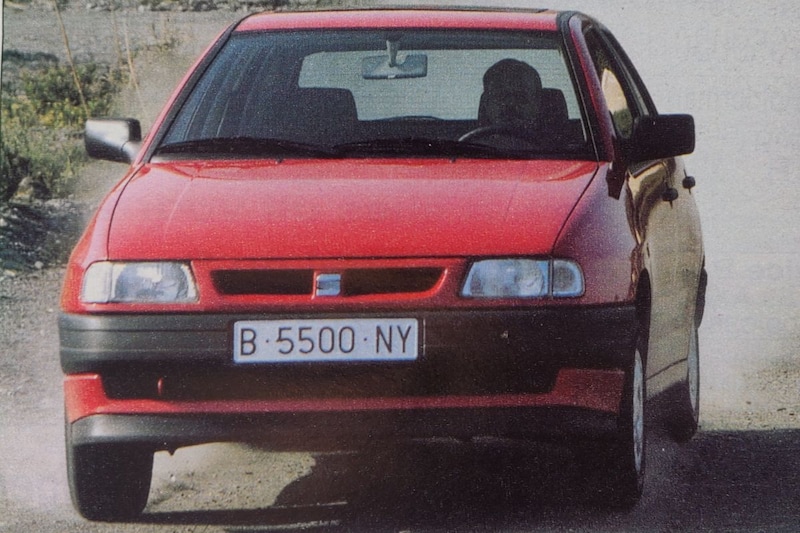‘Only the name stayed the same’

The 90s were as important for few car brands as for Seat. That then grew under the wings of Volkswagen into a modern and successful brand. The second Ibiza had a leading role in this and we drove it for the first time exactly 30 years ago.
Seat’s great ‘Volkswagen revolution’ started in 1991 with the arrival of the Toledo; a brand new successor to the Malaga, based on the Volkswagen Golf. Seat repeated that trick two years later with the second generation of the Ibiza, which shared its technology with the Volkswagen Polo. The design also looked at what had brought success to the Germans, because grandmaster Giorgetto Giugiaro put the basic lines of this new Ibiza on paper.
The result was an Ibiza that said goodbye to its predecessor of the old Seat-Fiat stamp on several fronts. Was it then simply a German car that was built in Spain? Well, no, despite VW’s interference, some typical Seat elements remained. This was especially noticeable when driving, but more on that later.

Typical Ibiza
To start with, Seat (together with Giugiaro) succeeded quite well in giving the Ibiza its own face. But we felt it was a bit reminiscent of its predecessor here and there: “Like the old Ibiza, the new one has a particularly short rear overhang, but in keeping with the trend, the ’93 Ibiza is rounder and more natural. it resembles its bigger brother Toledo As with the Toledo, we find various buttons and levers in the interior that will be familiar to drivers of a young VW or Audi, but we also encounter typical Ibiza features such as the strikingly large handles on the front doors and the storage box on the left under the steering wheel.”
On the road with the new Ibiza, it was noticed that there were even more parallels with the first Ibiza. Striking, because the technical basis was completely different and Volkswagen had a rather different reputation in terms of handling than Seat and Fiat. “Driving the Ibiza, made under VW management, evokes memories of driving a copy from Seat’s Fiat era. The suspension is softer than we are used to from almost all European and Japanese competitors of this Spanish model. You can also steering wheel and moving slightly to the left or right without the wheels responding. Due to the soft suspension, the car leans clearly in fast corners.” According to Seat, the Ibiza was a lot more ‘comfortably suspended’ due to the bad roads in Spain and the little bit of play on the steering wheel was deliberately not to pass on potholes in the roads to the driver too abruptly. That was the official statement we received from Seat at the time. With retroactive effect, a striking approach, which later came to be marketed more as Volkswagen’s sportier brother.

Still sporty
Although we felt that the standard Ibiza felt somewhat insecure at higher speeds, that was not the case with the GTI at all. We drove that too and it made quite an impression. The fact that there was also a version in the barrel with the 1.8 sixteen-valve of the Golf in the nose left us on the edge of our seats. This would not have been possible for most Dutch people and Seat expected a lot from the Ibiza with 1.3. The entry-level model was a somewhat cramped 1.0 and above the 1.3, a 1.6, 1.8 and 2.0 were added at the introduction. For the diesels there was the 1.9 D. Later, a 2.0 16V, a 1.4 and a 1.9 TD would also be added to the range. The second Seat Ibiza was in any case quite popular here in the Netherlands and sold better than its predecessor. Top year was 1995, when barely 5,000 new units left the showroom.
.
– Thanks for information from Autoweek.nl